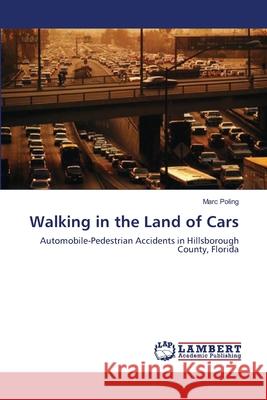Walking in the Land of Cars » książka
Walking in the Land of Cars
ISBN-13: 9783659634352 / Angielski / Miękka / 2014 / 84 str.
Analyses of traffic accidents are often focused on the characteristics of the accident event and hence do not take into account the broader neighborhood contexts in which accidents are located. This thesis seeks to extend empirical analyses of accidents by understanding the link between accidents and their surroundings. The case study for this thesis is Hillsborough County, Florida, within which the city of Tampa is located. The Tampa Bay region ranks very high in terms of accident rates within U.S. metropolitan areas and is also characterized by transport policies which favor private automobiles over mass transit options, making it an especially valuable case study. This thesis seeks explanations for accidents through regression models which relate accident occurrence and accident rates to traffic, roadway and socioeconomic characteristics of census tracts. The overall findings are that socioeconomic variables, especially poverty rates and percent non-white, and transport characteristics, such as density of bus stops, show a significant relationship with both dependent variables. This research provides support for considering the wider urban context of social inequalities.
Analyses of traffic accidents are often focused on the characteristics of the accident event and hence do not take into account the broader neighborhood contexts in which accidents are located. This thesis seeks to extend empirical analyses of accidents by understanding the link between accidents and their surroundings. The case study for this thesis is Hillsborough County, Florida, within which the city of Tampa is located. The Tampa Bay region ranks very high in terms of accident rates within U.S. metropolitan areas and is also characterized by transport policies which favor private automobiles over mass transit options, making it an especially valuable case study. This thesis seeks explanations for accidents through regression models which relate accident occurrence and accident rates to traffic, roadway and socioeconomic characteristics of census tracts. The overall findings are that socioeconomic variables, especially poverty rates and percent non-white, and transport characteristics, such as density of bus stops, show a significant relationship with both dependent variables. This research provides support for considering the wider urban context of social inequalities.











